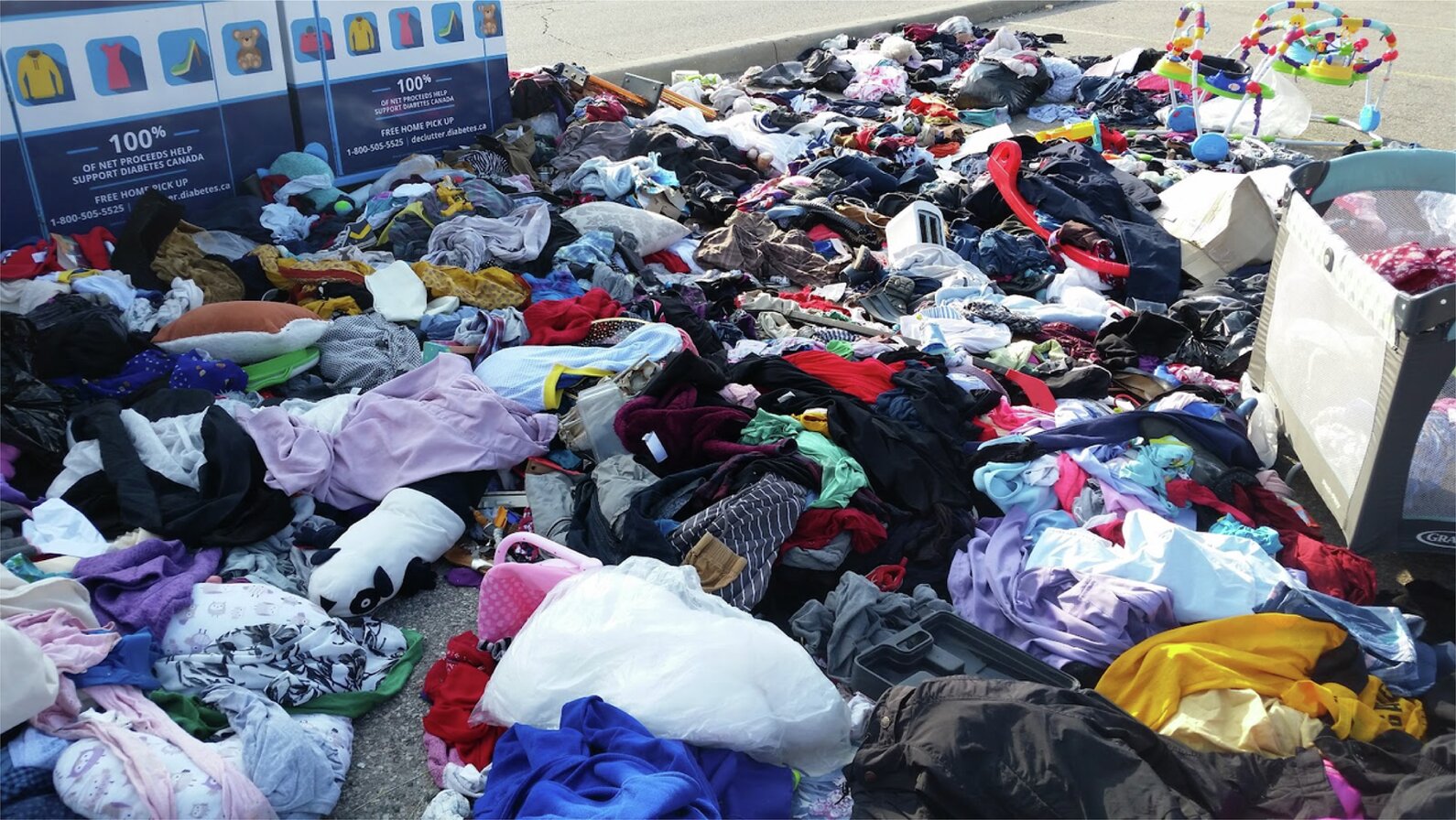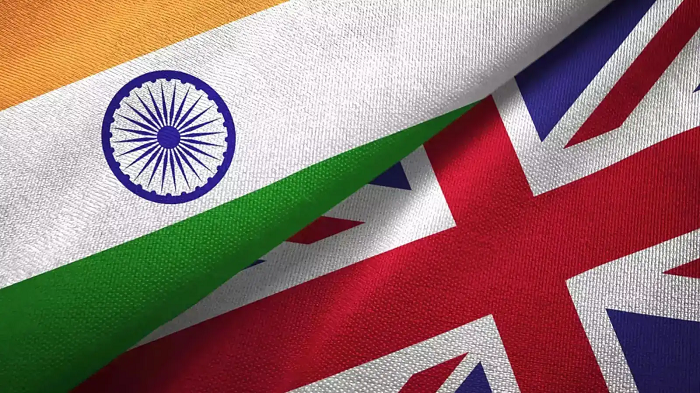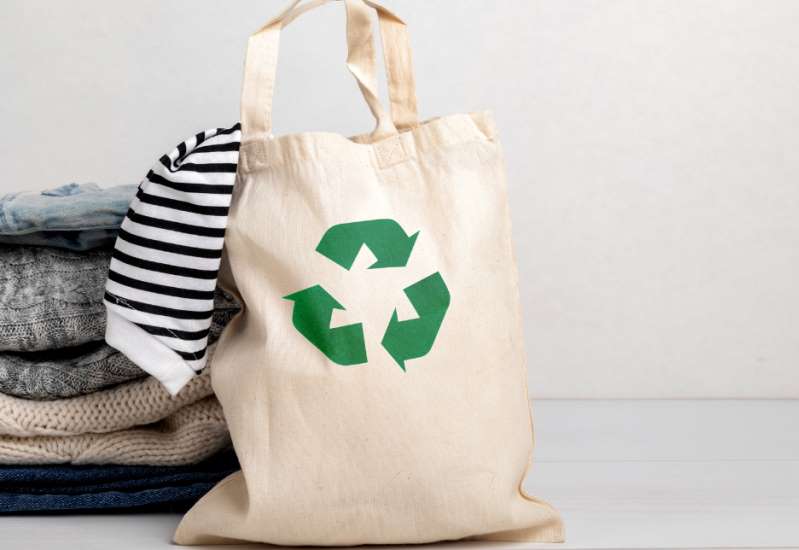FW
Welcoming the treaty, the Indian textile industry terms the India-UK Free Trade Agreement (FTA) as a significant step toward increasing India's presence in the UK market.
The agreement will help unlock new opportunities for exporters, boosting trade, employment, and global competitiveness, opine experts
Santosh Katariya, President, Clothing Manufacturers Association of India (CMAI), notes, UK is a growing and promising market for Indian textile and apparel products.
Recent tariff developments in the US highlight the need to diversify export destinations, making this FTA especially timely, he points out.
There is a strong need to diversify textile exports, and this FTA agreement will help knitted and woven apparel from India boost share in the UK market, adds Katariya.
An emphasis on sustainability, quality, and digital marketing with reduced prices will help Indian brands for UK consumers, he notes.
Experts opine, reduced tariffs under this FTA will drive demand for Indian textiles in the UK, resulting in increased export volumes.
The agreement will help stimulate investment and enhance the ease of doing business for textile stakeholders in both countries, they add.
Thanking Prime Minister Narendra Modi and Union Commerce Minister Piyush Goyal for their instrumental roles in securing this historic trade pact, A. Sakthivel, Vice Chairman, Apparel Export Promotion Council (AEPC), said, this monumental achievement will provide a strong boost to India's textile exports and fuel employment and growth in the sector.
The FTA will pave the way for long-term growth, attract investment, and create a more favorable business environment for textile stakeholders in both countries, he added.
The India-UK FTA marks the beginning of a new era for Indian textiles, with long-term benefits anticipated in market access, innovation, and global branding, industry leaders opine.
The Q1, FY25 profit margins of sportswear giant Puma declined and the brand reported flat sales as it focused on cutting costs and boosting overall performance.
Surpassing analysts’ projections of €2.041 billion, the brand’s sales increased by 0.1 per cent Y-o-Y to €2.076 billion (around $2.35 billion), during the quarter. However, softer demand from retailers in key markets like the US and China resulted in a 3.6 per cent decline in the brand’s revenue from the wholesale segment.
Currently undergoing a leadership change, the brand named Arthur Hoeld, former Sales Executive, Adidas as its new CEO. Hoeld will officially step into the role on July 1. In the meantime, Puma’s board is overseeing operations following Arne Freundt’s resignation on April 11.
Despite the ongoing challenges, Puma maintained its 2025 outlook, projecting ‘low- to mid-single-digit’ sales growth. However, the forecast does not include any potential impact from U.S. tariffs.
A premier shopping complex managed by Tilal Development Company, Muscat Grand Mall has introduced a new concept, ‘Little India’ in partnership with SRED.
Set up as a specific cultural and retail area, the concept showcases Indian fashion, lifestyle, food, and heritage in Oman. It is being presented as a jumping-off point for Indian brands entering the Gulf Cooperation Council (GCC) market,
As announced by the Tilal Development Company, the concept, Little India aims to link businesses with Omani shoppers and visitors looking for genuine and diverse retail options. The project is also designed to serve the large Indian population residing in the vicinity.
Ali Hosni, CEO and General Manager, Muscat Grand Mall says, with Little India, the retailer builds a strong connection between India and the GCC. It provides an opportunity to Indian brands join a regional success story, supported by consistent foot traffic, top-notch facilities, and a growing consumer base here in Oman, he adds.
The initiative will provide Indian fashion labels and artisan ventures with a purpose-built space inside Muscat Grand Mall, backed by leasing options and targeted marketing support. The so ial system has been created to support the substantial Indian community in Oman and the wider Gulf region, adds Sriram PM Monga, Co-founder, SRED.
The 93rd Textile Institute World Conference (TIWC 2025) is set to be held at the Porto Palácio Hotel and Spa in Porto, Portugal, from October 7-10, 2025.
With its theme titled, ‘Fiber to Future – Transforming Fashion and Textiles through Sustainability,’ the conference will delve into how sustainability and digitalization are reshaping the industry, covering everything from fiber production and manufacturing to consumer use and end-of-life solutions.
Over the four-day program, attendees will dive deep into the rapidly emerging new methods fortackling sustainability issues and the digital technologies that are currently boosting efficiency and transparency. Leading academics, industry experts, and policymakers will share their insights. The conference will emphasize actionable strategies for reducing environmental impact, minimizing waste, and adopting zero-carbon solutions, aligning with global sustainability objectives.
Stephanie Dick, CEO, Textile Instititute, says, encouraging collaboration between the industry and academia, the TIWC aims to build a shared vision for a sustainable and digital future in textiles. This year, the conference is being hosted by Aquitex, a renowned Portuguese company specializing in the development of chemicals and auxiliaries for the textile industry.
Hermès' Singular Vision Pays Off: Overtakes LVMH in market cap through decades of disciplined growth
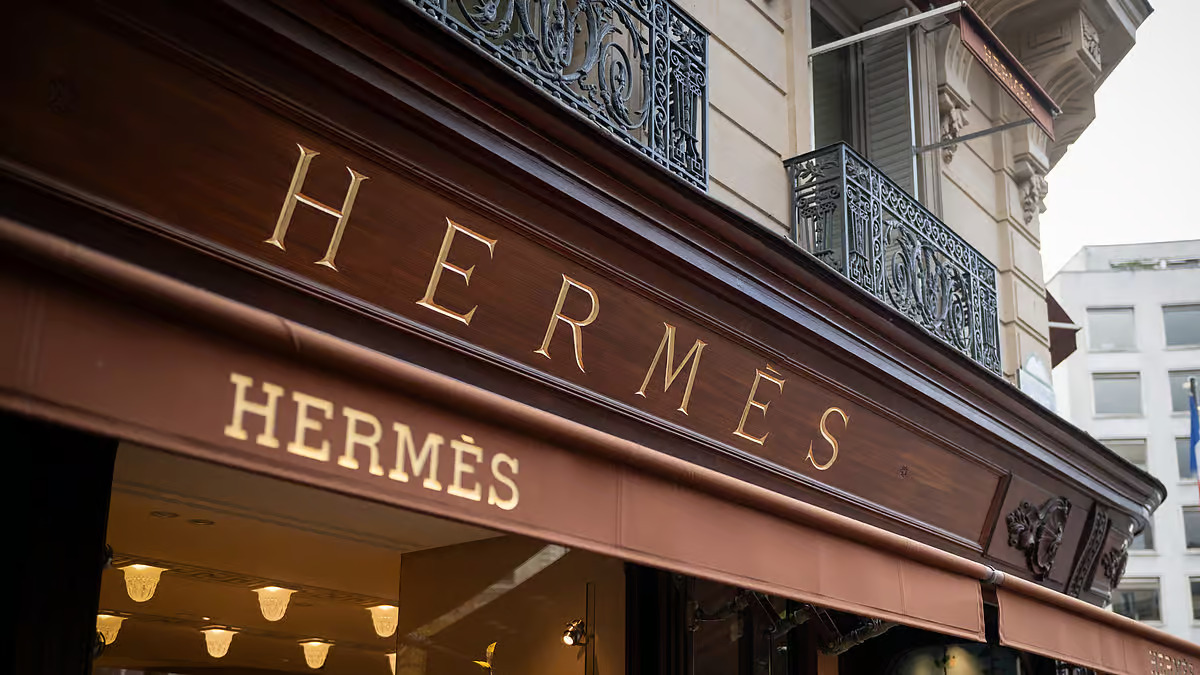
In a compelling narrative of focused growth versus diversified expansion, luxury powerhouse Hermès has shown the power of brand discipline, culminating in a market capitalization of €247.5 billion, slightly surpassing the €244.4 billion of its multi-brand rival LVMH. This according to an analysis by sportswear, luxury & fashion analyst Marcel Melzig, who highlighted Hermès' extraordinary journey from a €5.7 billion market cap in 2003 to this remarkable achievement without pursuing scale through typical means.
Melzig's analysis underscores Hermès' unwavering commitment to its core principles. Over the past 22 years, the Parisian Maison has achieved 43-fold growth, translating to a 17 per cent compound annual growth rate (CAGR), all while maintaining a singular brand identity and a consistent narrative. "Hermès grew from €5.7B to €247.5B without chasing scale," Melzig's analysis points out. "No pivots. No rebrands. No mega-acquisitions. One brand, one story."
"Hermès' growth story is unique in the luxury landscape," Melzig notes. "They haven't chased fleeting trends undergone radical rebrands, or engaged in mega-acquisitions. Their strategy has been one of unwavering brand discipline." This "brand discipline," as Melzig terms it, involves a deliberate choice to ignore fleeting "hype" and instead focus on enduring values.
Hermès scoring on scarcity by design
A cornerstone of Hermès' success, according to the analysis, is its deliberate cultivation of scarcity by design. By resisting the urge to overextend or chase short-lived hypes, Hermès has fostered a timeless desirability around its iconic products. This approach, avoiding "trend-chasing" and "overextension," ensures "timeless desirability" and stands in stark contrast to the broader market trends often seen in the luxury sector. Analysts say, the enduring desirability of Hermès products transcends fleeting trends, allowing sustained pricing power and strong margins. This focus on exclusivity also contributes to the brand's resilience in economic downturns, as the demand for truly exclusive and timeless items tends to be more stable. What’s more, by focusing on a single brand, Hermès maintains tighter control over its image, reducing the risk of brand dilution.
Craftsmanship at the core
Another crucial element is craftsmanship at the core. With its family roots, strong vertical integration, and unwavering focus on premium control over its production, the brand ensures the exceptional quality that underpins its luxury status. This dedication to quality can also lead to exceptionally high profit margins on its core products.
However, relying on a single brand inherently limits the avenues for rapid growth compared to a conglomerate. There's also a potential long-term vulnerability to significant shifts in consumer tastes, and the brand might miss out on synergies and economies of scale enjoyed by larger groups. Over-dependence on core products is also a potential risk.
LVMH relying on diversification and scale
Meanwhile, LVMH, a conglomerate of 75 distinct ‘maisons’ – from Dior to Dom Pérignon – operates on a different strategic plane. While some of its individual brands, such as Loro Piana, likely hitting double-digit growth, the group's strength lies in its diversification and vast scale. "LVMH plays a different game," Melzig observes, highlighting its structure as a "powerhouse of diversification and scale." "LVMH's strength lies in its ability to capture growth across multiple luxury segments, providing resilience against market-specific headwinds," explains a hypothetical Financial Analyst specializing in Luxury Conglomerates. The conglomerate structure allows LVMH to leverage synergies in sourcing, distribution, and marketing, and its acquisition-driven growth strategy provides significant avenues for expansion. With brands catering to different price points, LVMH also achieves a broader market reach.
Table: Illustrative financial and brand metrics
|
Metric |
Hermès (2024 - estimate) |
LVMH (2024 actual) |
Notes |
|
Market Capitalization |
€240-250 Billion |
€240-250 Billion |
As of late 2024/early 2025 estimates leading up to the news. |
|
Revenue Growth (YoY) |
~15-20% |
~9-12% |
Hermès typically shows strong organic growth. LVMH's is a blended rate. |
|
Operating Profit Margin |
~35-40% |
~25-30% |
Hermès often boasts higher individual brand margins. |
|
Number of Brands |
1 |
75+ |
Key differentiator in business model. |
|
Brand Value (Estimate) |
High (Concentrated) |
Very High (Diversified) |
Both have strong brand value, distributed differently. |
|
Organic Growth Focus |
Very High |
Moderate |
Hermès primarily relies on organic growth. |
|
Acquisition Activity |
Very Low |
High |
LVMH actively uses acquisitions for growth. |
Melzig points out a key difference in transparency, stating, "LVMH doesn’t report single-brand results, making a direct comparison of individual brand performance challenging. Focus is hard. Managing 75 brands? Even harder." This complexity of managing a vast portfolio and the potential for brand dilution within the group are potential challenges. Integrating newly acquired brands can also be a complex process.
In essence, the analysis posits that "Hermès bet on one horse" – its iconic brand – and nurtured it with meticulous care. In contrast, "LVMH runs the whole stable," capitalizing on synergies and managing a diverse array of luxury assets.
Ultimately, Melzig concludes that both Hermès and LVMH represent "two winning strategies" and "two ways to play the luxury game." Hermès' remarkable ascent highlights the power of unwavering focus and brand discipline, while LVMH's continued dominance showcases the strength of diversification and scale in the competitive luxury market. The current market capitalization figures suggest that, at least for now, Hermès' singular vision has resonated powerfully with investors.
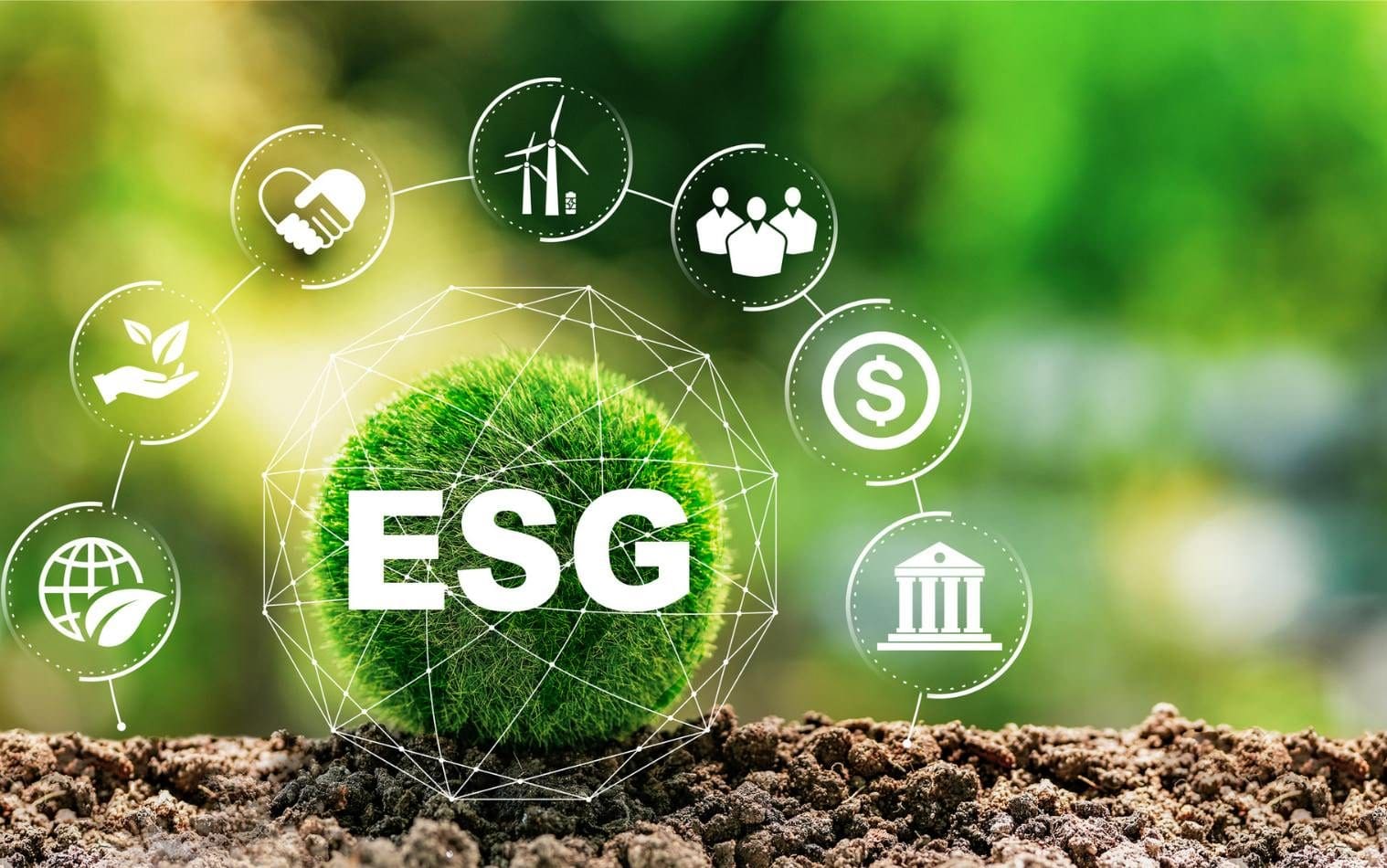
Julia Vol’s LinkedIn post, echoing the Financial Times headline ‘ESG fund outflow hit record as sustainable investing backlash grows’, strikes a raw nerve in the discourse surrounding sustainable investing. Her assertion in the article that ESG, in its current form, has faltered in delivering financial promises, along with the image of Donald Trump – a figure often associated with anti-‘woke’ sentiment – suggests a complex interplay of economic realities and political ideologies impacting the sustainability agenda. For the textile, apparel, and fashion industries, long under scrutiny for their environmental and social impact, this shift creates both challenges and opportunities for a more pragmatic and effective approach to long-term sustainability.
Vol's argument, supported by the observation of capital flight from both European and Asian ESG funds, challenges the notion that sustainability is an unwavering priority for investors when it clashes with financial returns. The initial outperformance of ESG funds, she says, stemmed from easily achievable gains and marketing ploys, which have since plateaued. This resonates within the fashion industry, where early sustainable initiatives often focused on material swaps or small-scale ethical collections that, while commendable, did not fundamentally alter the industry's linear, resource-intensive model.
Consumer behavior as highlighted by Vol – the preference for cheaper, often less sustainable options from retailers like Temu and Shein – underscores a critical hurdle for the industry. Despite growing consumer awareness of environmental and social issues, price often remains the dominant factor in purchasing decisions. This creates a tension for brands attempting to implement more sustainable practices, which often translate to higher production costs and, consequently, potentially higher retail prices.
The price of principle
Several examples within the textile and apparel sector illustrate this challenge. Organic cotton, often touted as a more sustainable alternative to conventional cotton, typically carries a higher price tag due to lower yields and different farming practices. A study by the Textile Exchange found that while organic cotton production has increased, its market share remains relatively small compared to conventional cotton. This suggests that while some consumers are willing to pay a premium for organic options, the majority still opt for more affordable alternatives.
Similarly, brands committed to fair labor practices often face higher manufacturing costs compared to those utilizing factories with lower wages and less stringent working conditions. The Rana Plaza factory collapse in Bangladesh in 2013 highlighted the human cost of the industry's relentless pursuit of low prices. While this tragedy spurred some brands to improve their supply chain transparency and implement stricter social audits, the pressure to offer competitive prices remains intense.
Navigating the shifting landscape
Industry experts acknowledge the complexities highlighted by Vol. As Orsola de Castro, Co-founder, Fashion Revolution said in an interview, "The disconnect between consumer values and purchasing behavior is a significant obstacle. While people express concern about the environment and labor rights, translating that into consistent purchasing decisions is a challenge, especially when faced with cheaper alternatives."
Also, the focus on ESG ratings, as criticized by Vol, has led to instances of "greenwashing" within the fashion industry. Brands may highlight minor sustainable initiatives in their marketing without making fundamental changes to their core business model. This can erode consumer trust and fuel skepticism towards ESG claims. A report by the Changing Markets Foundation found that many fast fashion brands continue to heavily rely on virgin fossil fuels for their materials, despite marketing campaigns emphasizing sustainability.
A shift towards tangible impact in fashion
However, the narrative is not entirely bleak. As Vol suggests, the focus may be shifting towards ‘impact investing’ that is targeted, tangible, and outcome-driven initiatives. In the fashion industry, this could translate to greater investment in innovative materials like recycled textiles, bio-based fibers, and circular business models such as rental and resale platforms.
Companies like Patagonia, for instance, have long integrated sustainability into their core business strategy, focusing on product durability, repair services, and material innovation. Their commitment goes beyond mere reporting and translates into tangible actions aimed at reducing their environmental footprint and promoting a more circular economy. Their consistent brand loyalty and financial success demonstrate that a genuine commitment to sustainability can be a driver of long-term value.
Similarly, the growth of the pre-owned fashion market, lead by platforms like ThredUp and Vestiaire Collective, indicates a growing consumer appetite for more sustainable consumption models. This shift is driven by both environmental concerns and the desire for unique and affordable items.
Setting the stage for accountability
Vol rightly points out it is the role of regulators to "prop up businesses for 'doing the right thing.'" In the fashion industry, stricter regulations regarding environmental impact, waste management, and labor practices are crucial to level the playing field and incentivize genuine sustainability efforts. The European Union's Strategy for Sustainable and Circular Textiles, for example, aims to establish stricter requirements for textile products, promote eco-design, and boost textile reuse and recycling.
The backlash against traditional ESG investing, as highlighted by Julia Vol serves as a critical inflection point for the textile, apparel, and fashion industries. While the allure of easy financial gains from superficial sustainability efforts may be waning, the fundamental need for a more responsible and resilient industry remains.
The future of sustainability in fashion lies not in chasing fleeting ESG ratings but in embracing tangible impact through innovation, circular business models, and transparent supply chains. While consumer price sensitivity remains a challenge, stricter regulations and a growing demand for truly sustainable alternatives can help weave a new fabric for the industry – one that prioritizes long-term value creation over short-term financial optics. The unraveling of the current ESG narrative may ultimately pave the way for a more authentic and impactful approach to sustainability, where environmental and social responsibility are not just checkboxes but integral threads in the industry's very design.
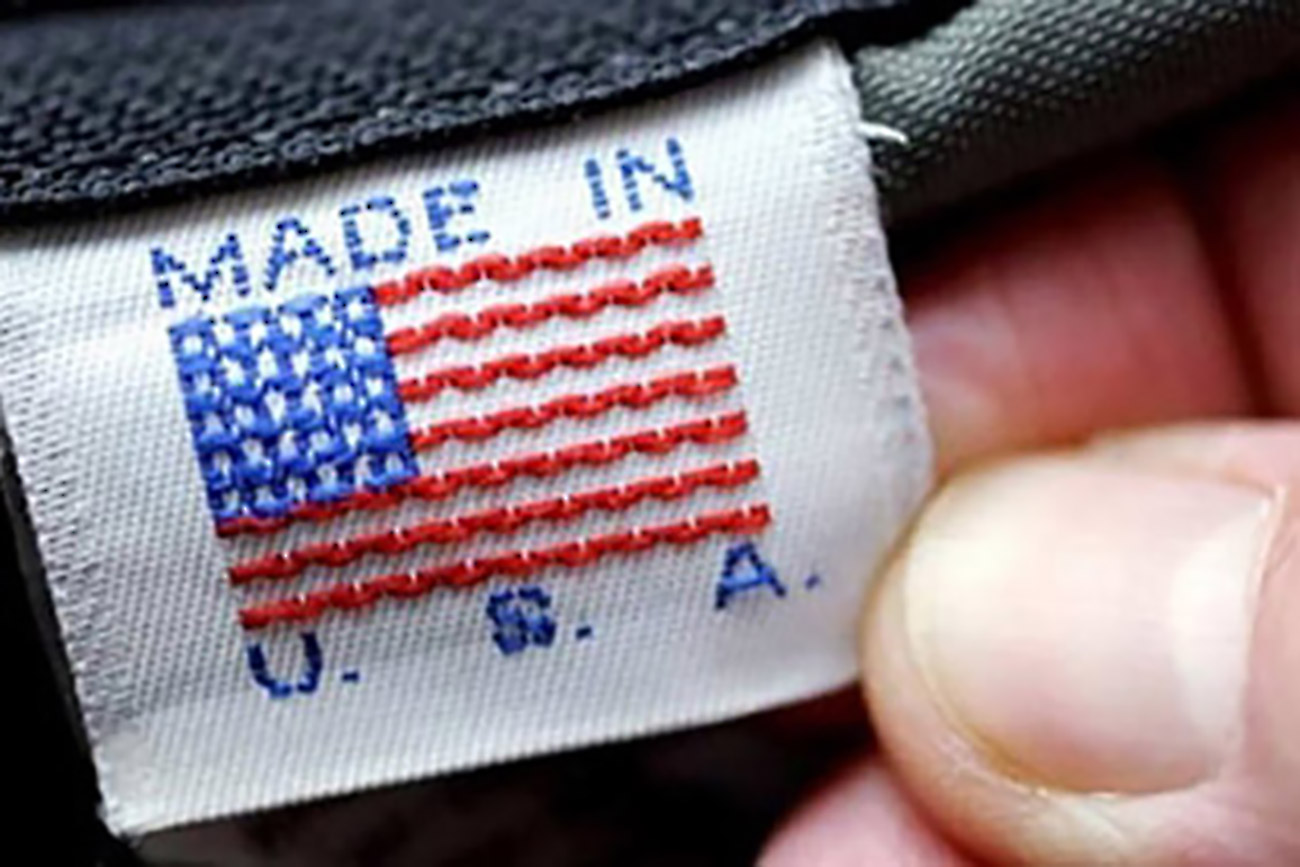
The allure of ultra-cheap clothing often masks the intricate economic and social factors that enable low prices. While online platforms tempt consumers with dresses priced as low as $5, a growing discourse examines the true cost, particularly when considering domestic production with fair labor practices and quality materials. Expert analyses reveal that ‘Made in USA’ tags could translate to significantly higher retail prices, exposing the hidden costs embedded within the current fast-fashion model.
Calculations based on material costs and prevailing wages in the US suggest a substantial price rise for consumers. A simple dress shirt or blouse, frequently manufactured overseas using inexpensive synthetic fabrics, could retail between $126 and $207 if produced domestically with organic cotton. Similarly, a pair of jeans, a seemingly basic wardrobe item, might cost consumers $234 to $324.
Table: Estimated retail price range for American-made clothing
Garment Estimated retail price ($) Cost drivers Dress Shirt/Blouse $126 - $207 Organic US cotton ($21 material cost), US labor ($18-$45), buttons ($3) Outdoor Jacket $332 - $1,644 Wool/rayon fabric ($70-$395), zipper/snaps ($3.40), complex US labor ($40-$150) Jeans $234 - $324 US denim ($24), hardware ($4), specialized US labor ($50-$80) Evening Gown $594 - $750 Imported silk ($78-$130), highly skilled US labor ($120) Formal Suit $750 - $2,610 Wool/lining fabric ($100-$620), intricate US labor ($150-$250)
Note: These are expert estimations and can vary based on numerous factors.
The stark contrast in potential pricing highlights the significant cost advantages derived from offshore manufacturing, often in nations with considerably lower labor standards and environmental regulations. Investigations, such as the 2022 report by the U.S. Department of Labor on garment factories in Los Angeles, revealed widespread wage violations and unsafe working conditions even within the US.
This underscores that the pursuit of lower costs can lead to exploitative practices regardless of location, although the scale is significantly larger overseas. Reports from organizations like the Clean Clothes Campaign consistently document issues of low wages, excessive working hours, and unsafe environments in garment factories across Asia, contributing to the low retail prices seen in fast fashion.
Tariffs impact on domestic production
The new tariffs on goods from various countries including China, has been argued as a way to incentivize domestic manufacturing (Office of the United States Trade Representative). The intent is to create a level playing field by increasing the cost of imported goods, theoretically making domestically produced items more competitive. However, the effectiveness of tariffs shifting manufacturing back to the US is debated. A 2021 study by the Peterson Institute for International Economics found that while tariffs increased the cost of imported goods for US consumers, they did not lead to a substantial resurgence in domestic manufacturing. Businesses often absorbed some of the tariff costs or shifted sourcing to other low-cost countries.
Reshoring initiative of American Giant
American Giant, a US-based clothing company, provides a contrasting example. Founded on the principle of domestic manufacturing using high-quality materials and paying fair wages, their products command a premium price. Their signature hoodie, for instance, retails for over $100. The company has shown that a segment of consumers is willing to pay more for American-made goods, citing quality, ethical production and job creation as key factors. However, scaling this model to meet the demand of the broader fast-fashion market presents significant challenges in terms of production capacity and cost competitiveness.
Falling domestic manufacturing and supply chain vulnerabilities
The erosion of the US garment manufacturing sector over the past few decades has created hurdles for large-scale reshoring efforts. Numerous domestic factories have closed due to competitive pressures, leading to a falling skilled workforce and a fragmented supply chain. Data from the Bureau of Labor Statistics shows a consistent decline in textile and apparel manufacturing employment in the US since the 1990s. This hollowing out means even if companies wanted to produce more domestically, the infrastructure and expertise are not readily available. Furthermore, the US relies heavily on imports for raw materials like high-quality cotton, silk, and wool, adding complexity and cost to domestic production.
Shifting consumer perceptions
While consumers have become accustomed to low clothing prices, there is a growing awareness of the social and environmental costs associated with fast fashion. Movements advocating sustainable and ethical fashion are gaining traction, suggesting a potential shift in consumer values. However, translating this awareness into widespread willingness to pay significantly higher prices remains a challenge.
Ultimately, the question of how much clothes would cost if made in the US highlights a fundamental trade-off between price, ethics, and sustainability. While domestic production with fair labor and quality materials would undoubtedly lead to higher retail costs, it also offers the potential for a more responsible and resilient fashion industry. At the same time, while challenges exist, targeted policies, consumer demand for ethical products, and strategic business models could play a role in gradually reshaping the landscape of clothing manufacturing. The significant price differential serves as a stark reminder of the true cost of the cheap clothing that dominates the current market.

The assertion that Americans in 2023 spent less than 3 per cent of their annual income on clothing, a significant drop from the 14 per cent seen in the first half of the 20th century, highlights a fundamental shift in consumer expenditure and behavior.
Why the dip in apparel expenditure
There are several reasons for falling household spending on clothing.
The falling cost of apparel: The most significant driver is the decrease in the relative cost of clothing. Tech advancements in textile production, globalization of supply chains, and the rise of mass manufacturing, particularly fast fashion, have made apparel significantly more affordable. As the Bureau of Labor Statistics notes, while overall prices have increased substantially since the early 20th century, apparel prices have risen at a comparatively slower rate.
Rise of fast fashion: The fast fashion business model, characterized by rapid production cycles and trendy, low-priced garments, has fundamentally altered consumption patterns. Consumers can now purchase a greater volume of clothing for a fraction of the cost compared to previous generations. This accessibility leads to frequent purchases but lower overall expenditure as a percentage of income. McKinsey reports that fast fashion retailers like Shein and Temu are now primary online fashion marketplaces in the US.
Shifting consumer priorities: Consumer spending patterns have evolved, with a larger share of the budget now allocated to other categories such as technology, travel, entertainment, and experiences. As costs have fallen, this has resulted in apparel and services accounting for just 2.6 per cent of the total average annual expenditure of $77,280 for US consumer units in 2023, as detailed in the Consumer Expenditures Survey by the U.S. Bureau of Labor Statistics. This figure underscores the shift when compared to the early 20th century. The table below provides a broader view of how apparel spending fits within the overall consumer expenditure landscape in 2023:
Table: Consumer Expenditures Survey, 2023, by the U.S. Bureau of Labor Statistics
|
Expenditure Category |
Average Annual Expenditure |
Percentage of Total Expenditure |
|
Total Expenditures |
$77,280 |
100.00% |
|
Housing |
25,498 |
32.90% |
|
Transportation |
13,148 |
17.00% |
|
Food |
9,986 |
12.90% |
|
Personal Insurance and Pensions |
9,597 |
12.40% |
|
Healthcare |
6,192 |
8.00% |
|
Entertainment |
3,635 |
4.70% |
|
Apparel and Services |
$2,041 |
2.60% |
|
Cash Contributions |
2,394 |
3.10% |
|
Education |
1,627 |
2.10% |
|
Alcoholic Beverages |
597 |
0.80% |
|
Tobacco Products and Smoking Supplies |
214 |
0.30% |
|
Personal Care Products and Services |
950 |
1.20% |
|
Reading and Educational Materials |
134 |
0.20% |
|
Miscellaneous |
1,267 |
1.60% |
This data highlights while apparel is a necessary expenditure, it now constitutes a relatively small portion of the total household budget compared to essential categories like housing, transportation, and food. This reinforces the idea that the declining percentage of income spent on clothing is not just due to lower costs, but also a reflection of evolving spending priorities
Increased durability and versatility: While fast fashion emphasizes trendiness over longevity, there's also a growing segment of consumers prioritizing durable and versatile clothing items. Investing in higher-quality, timeless pieces can reduce the need for frequent replacements, thus lowering overall expenditure over time.
Growth of the second-hand market: The growing resale market for apparel, led to by sustainability concerns and the desire for unique or discounted items is also impacting new clothing sales. Platforms like Poshmark and ThredUp are gaining popularity, offering consumers an alternative to purchasing new apparel and redirecting spending within the fashion ecosystem. By 2028, the US secondhand market is expected to be worth $73 billion.
Impact of online retail: E-commerce has revolutionized how consumers shop for clothing. The convenience and competitive pricing offered by online retailers have intensified price competition and potentially lowered the average transaction value for apparel. While online apparel sales have grown, the ease of comparison shopping can lead consumers to seek out the best deals, thus impacting overall spending. In 2023, apparel online sales and increased, a significant portion of total sales.
Changing consumer behavior
The decline in apparel expenditure reflects several shifts in how consumers approach fashion. While fast fashion encourages frequent purchases, a counter-trend emphasizes quality, durability, and sustainability. Consumers are increasingly conscious of the environmental and social impact of their clothing choices and are willing to invest in fewer, better-made items.
Millennials and Gen Z, in particular, are prioritizing spending on experiences like travel, dining, and entertainment over material possessions, including clothing. While consumers, especially younger generations, engage in online fashion browsing for inspiration, actual spending can be more need-based due to economic pressures and a focus on value. In the first quarter of 2025, a significant percentage of consumers planned to cut back spending on discretionary categories like apparel.
Also, post-pandemic lifestyle changes have led to sustained demand for comfort-based clothing like loungewear and activewear, which may have different price points and replacement cycles compared to more formal attire. With rising costs in essential categories like food and utilities, consumers are more price-conscious when it comes to discretionary spending, including apparel. Many are engaging in "trade-down" behavior, opting for lower-priced brands or delaying purchases.
Future outlook
The future of apparel expenditure in the US is likely to be shaped by a continuation of current trends, with some potential nuances. For example, e-commerce will remain a dominant channel for apparel purchases, and the second-hand market will see further growth as sustainability concerns grow and consumers seek more affordable options. Demand for sustainable and ethically produced clothing is expected to increase, potentially influencing pricing and consumer choices. Brands that prioritize transparency and eco-friendly practices may gain a competitive edge.
Fluctuations in the economy, inflation rates, and consumer confidence will continue to play a significant role in discretionary spending on apparel. Recent data from early 2025 indicates a slowdown in clothing and accessories spending, reflecting broader economic caution. Tech advancements will enhance the online shopping experience and potentially influence spending patterns. And the traditional fashion calendar will become less relevant, with a greater emphasis on seasonless and versatile collections that cater to year-round needs.
To address the significant demand for cotton in the nation’s textile industry, the Bangladesh Government plans to classify domestically produced cotton as an agricultural product.
As per experts, this long-sought recognition will unlock crucial financial support for cotton farmers and transform the sector by encouraging cultivation on currently underused land. Md Fakhre Alam ibn Tabib, Executive Director, Cotton Development Board (CDB), emphasizes, the heavy reliance of Bangladesh on cotton imports adds more pressure on the foreign exchange reserves besides exposing the textile industry to geopolitical risks.
To counter this, the government aims to expand cotton cultivation to 200,000 hectare by 2050 from the just over 45,000 hectare in FY23-24. This expansion is projected to fulfill up to 20 per cent of the nation's total cotton needs. Domestic cotton production reached about 205,421 bales in FY24.
The Bangladesh Textile Mills Association (BTMA) estimates the country's annual cotton demand to be around 8.5 million bales.
The government aims to utilize unused or underutilized lands, such as riverine islands (‘chars’), drought-prone areas (‘barinds’), hilly regions, and even certain fruit orchards, for cotton cultivation, without negatively impacting food production, according to Tahib.
Classifying cotton as an agricultural product will enable farmers to access subsidized loans at a 4 per cent interest rate, similar to other import-substituting crops, Tahib adds. This policy support will increase their access to low-interest loans and encourage broader participation, including contract farming, he states further.
According to experts, this policy will have a multifaceted positive impact on the rural economy, agriculture, and the textile industry, a cornerstone of Bangladesh's economy.
The Central Government has approved an Rs 2,100 crore PM Mega Integrated Textile Region and Apparel (PM MITRA) Park in the Dhar district of Madhya Pradesh. The project will prove to be game-changer for the state’s industrial landscape and boost India’s global textile presence, says Dr Mohan Yadav, Chief Minister.
Located strategically in Bhainsola village, Badnawar tehsil, the park is well-connected to Indore, the Pithampur industrial cluster, and the Delhi-Mumbai Expressway via Ratlam. Situated 452 km away, the Hazira port provides access to international trade routes.
The state government has already received proposals worth Rs 10,000 crore from various companies to set up their textile units in the park. The PM MITRA Park will boast state-of-the-art infrastructure, including a 20 MLD Zero Liquid Discharge (ZLD) plant, a solar-powered energy facility, plug-and-play Built-To-Suit (BTS) units, and residential complexes for workers.
The ambitious timeline targets completion of all construction activities within 14 months, suggesting the park could be operational by the last quarter of 2026.
A key focus of the PM MITRA Park will be to enhance the utilization of cotton produced within Madhya Pradesh, which is the fifth-largest cotton-growing state in the country. The park will not only focus on garment manufacturing but also encompass the entire upstream textile value chain, including spinning, weaving/knitting, and dyeing and processing. This integrated approach aims to boost cotton consumption within the state and reduce its reliance on supplying raw cotton to neighboring states.
Madhya Pradesh is expected to produce 19 lakh bales (of 170 kg each) of cotton during the current 2024–25 season, maintaining its output despite an anticipated decline in India's total cotton production. While output in the central cotton-producing zone, which includes Madhya Pradesh, Maharashtra, and Gujarat, is projected to decrease, Madhya Pradesh's steady production, coupled with the establishment of the PM MITRA Park, signals a promising future for value addition and economic growth within the state's textile industry.


